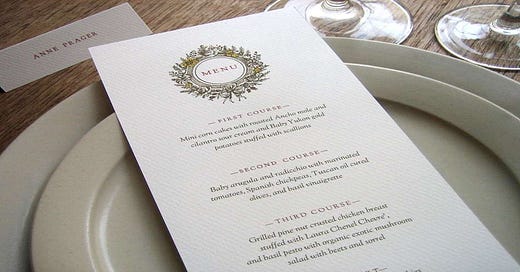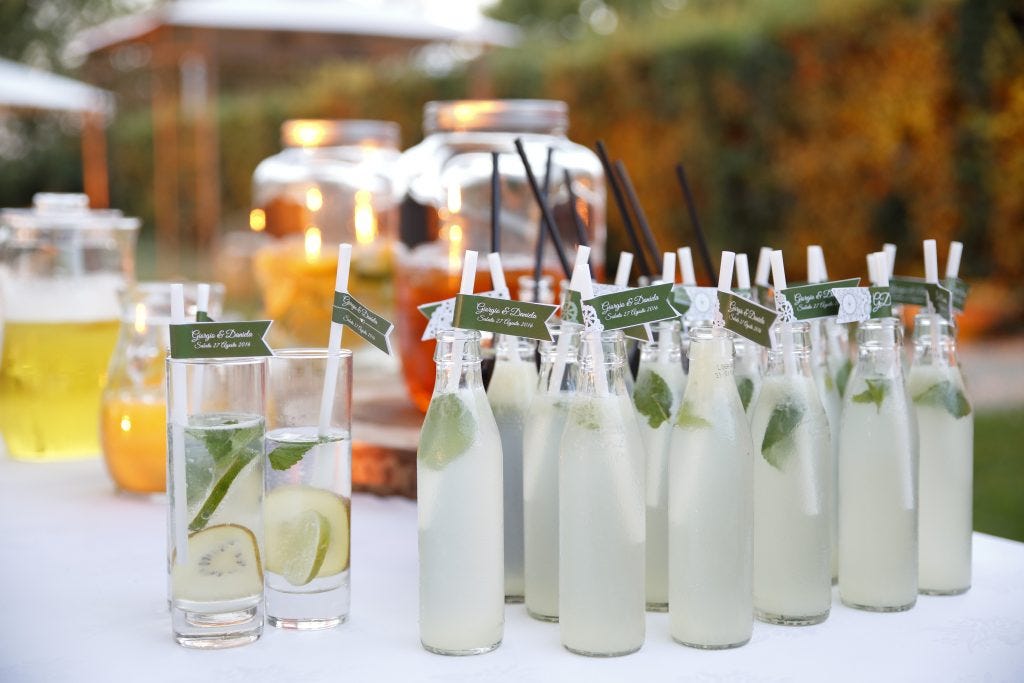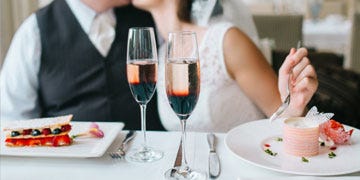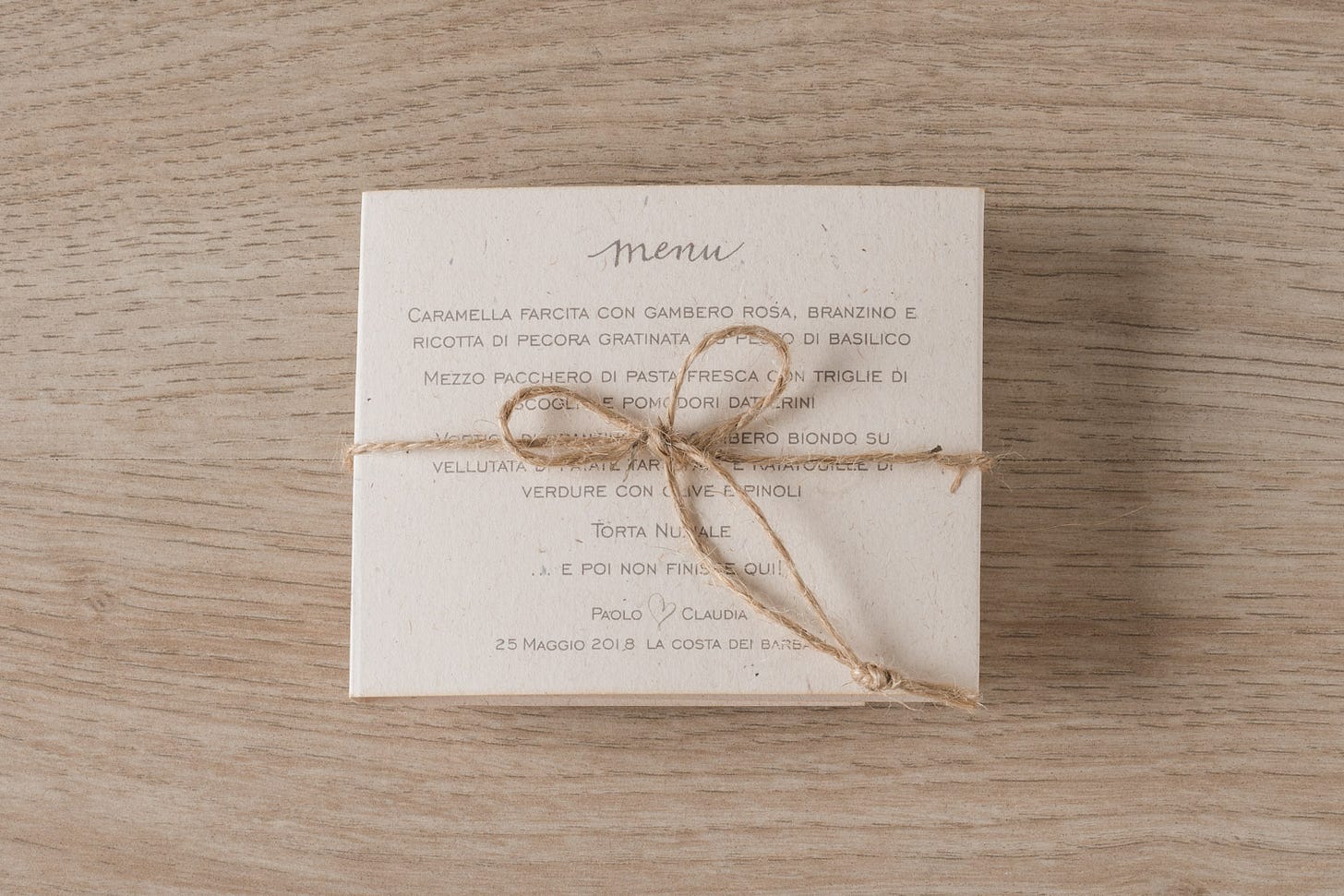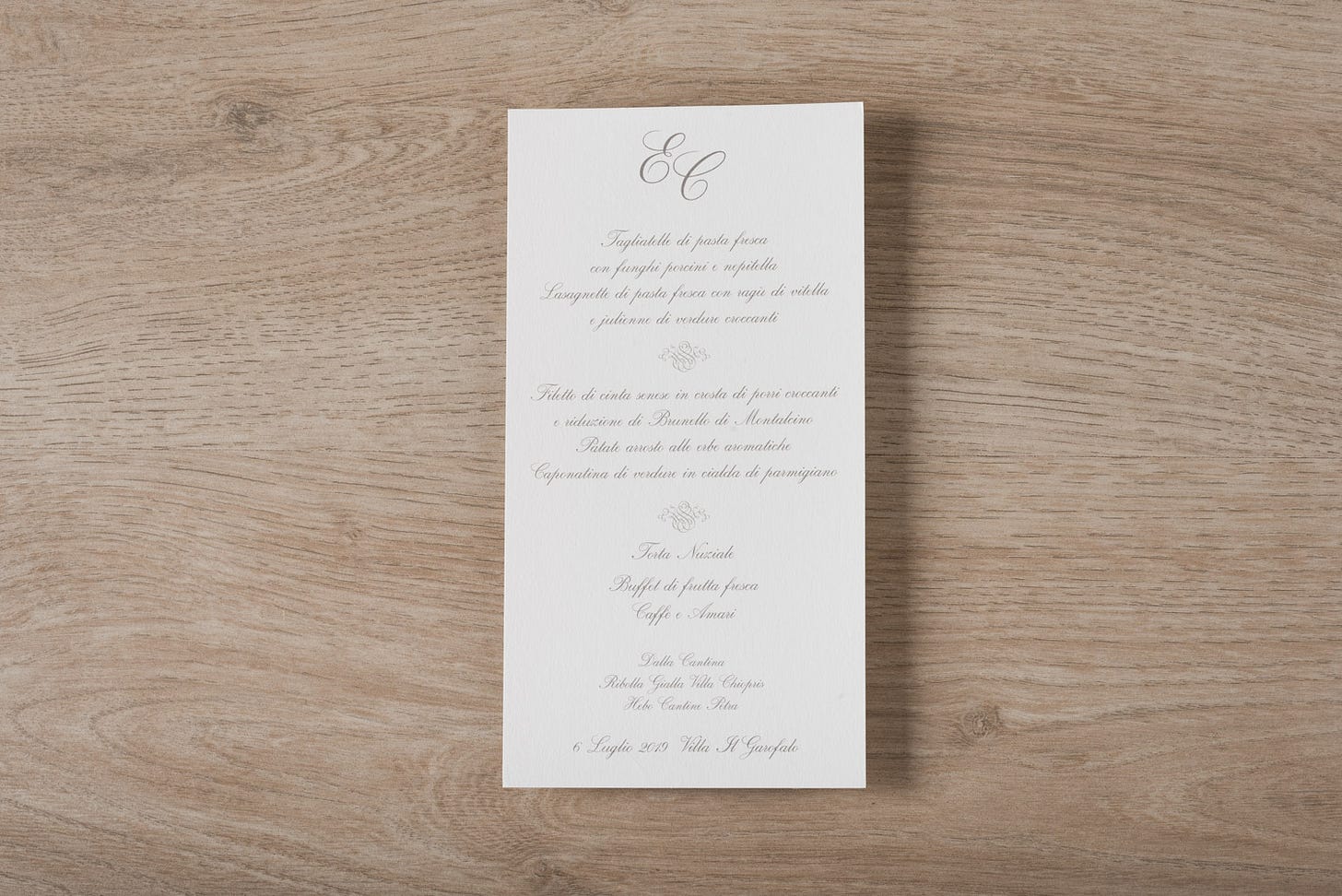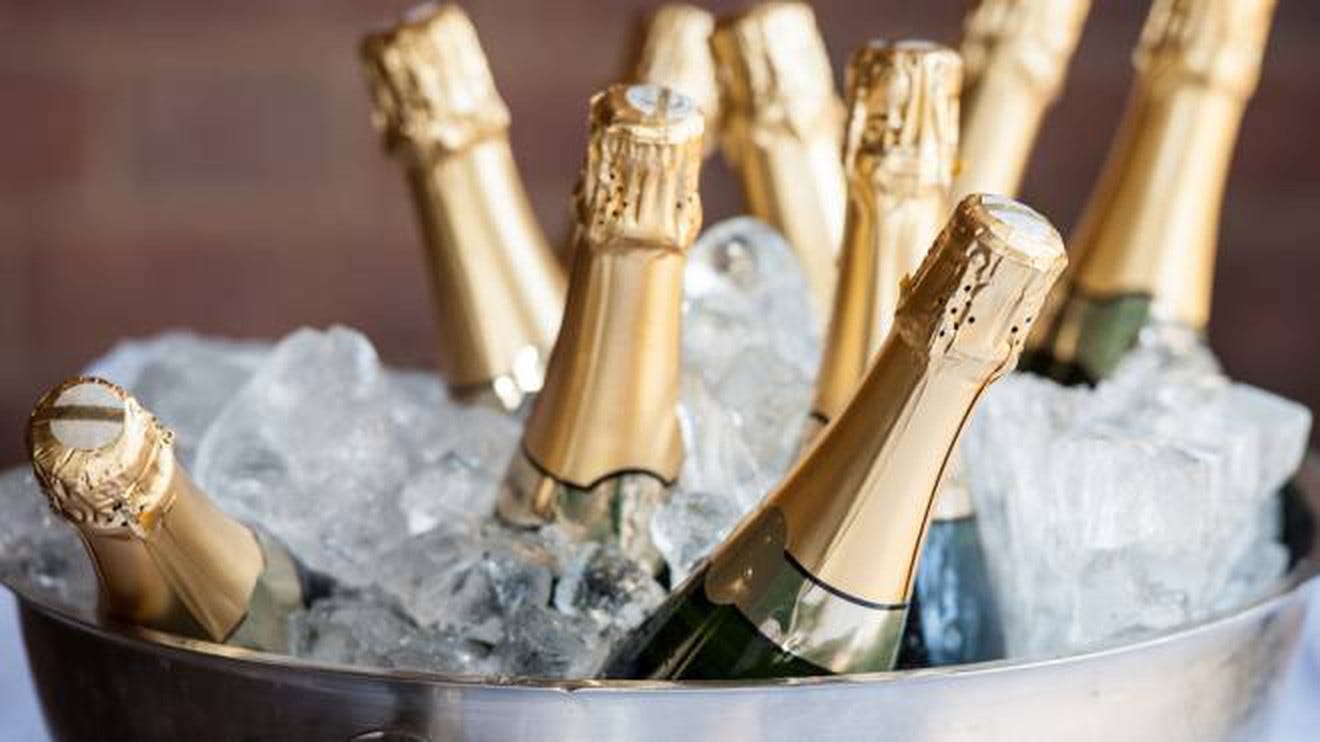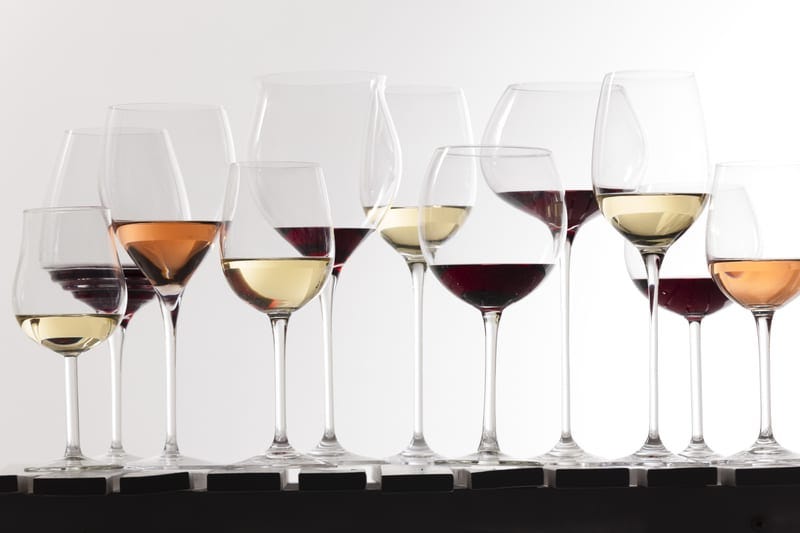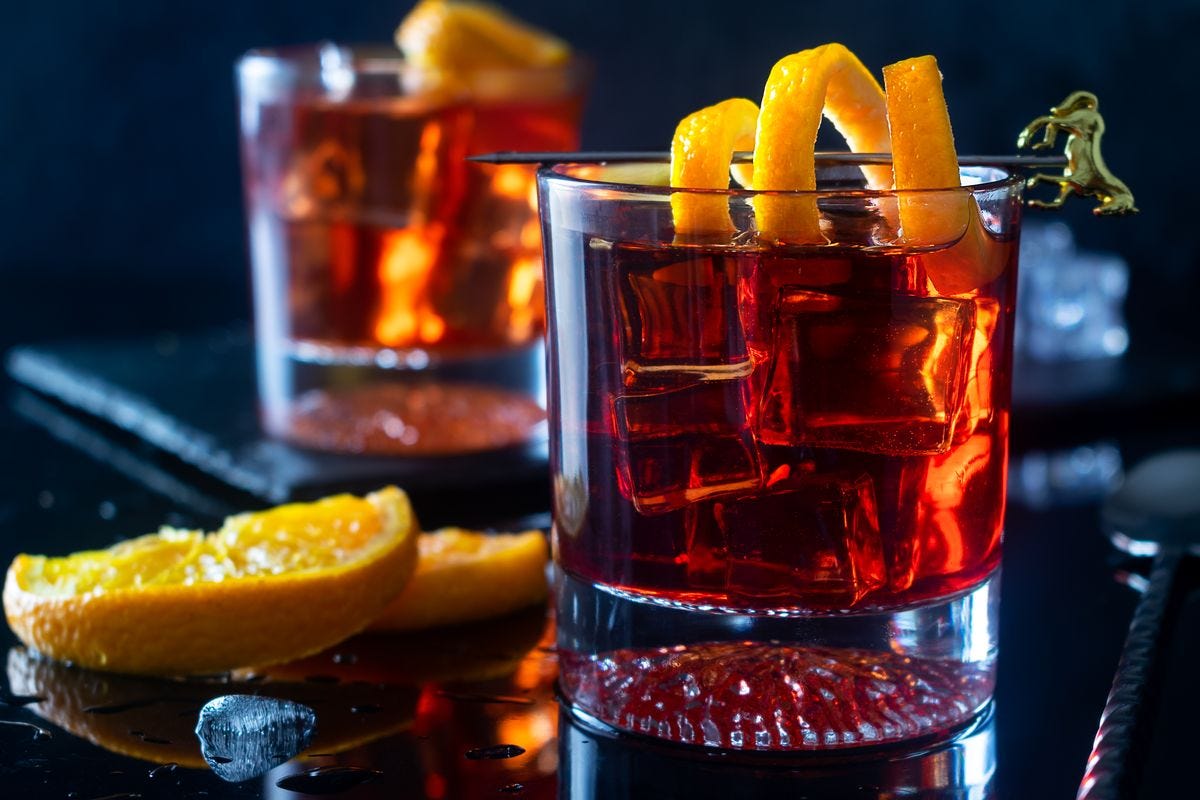The next four items on the checklist deal with closely related topics – like all the others, for that matter – and they are therefore worth addressing together, at least in an introductory fashion.
Menu and sequence
Wines
Cake
Cocktail
Item 20 deals with the menu and the sequence.
I specified these two terms because it is not possible to think of a nice menu if you do not have in mind the sequence of the courses: in my opinion, that of the sequence is a very delicate issue, as too many times I have witnessed a complete disaster just because the timing of the exit of the dishes was wrong.
The first result of the error in the sequence is the super-dilated time, which becomes a complete exhaustion when the guests have to be for hours and hours sitting at the table.
It is therefore clear that when choosing the menu, we should not only worry about choosing the best courses or the most effective ones, but it is absolutely necessary to understand if those specific courses can work together and with the right rhythm of exit and service.
The most frequent mistake in choosing the wedding menu is made when the bride and groom decide to compose the sequence of courses with their favorite dishes: "it's my day, I choose the one I like best", or "it's my party and the cake will be absolutely my favorite since I was three years old ”, or “I don't care if you don't like it, but I love French fries and they can't miss my banquet”, etc.
All this must not happen, because it may be true that it is the day of the newlyweds, their party, but it is a day that cannot contain the celebration of their gluttony (or the desires that were unconfessable up to that moment) all gathered in a meaningless menu!
So, once again, I feel like saying that it is key to seek advice from the chosen catering.
Generally, the catering makes proposals and the bride and groom then go to the so-called menu test: it is also possible that the menus to try are more than one, but this is a fundamental step that cannot be skipped.
The menu test will necessarily also be the sequence test.
A fairly classic menu includes an aperitif standing up; it is also possible that the appetizers part be a buffet, but then people take a seat at the table (their assigned seat) and the sequence of courses will start. This will include a first course (generally a risotto), a second course of fish, a fresh sorbet, a second course of meat. Then a long interval will be there before the cake, for which the guests will get up from the table to watch the cutting. Upon returning to their seats, the cake (of which they have only witnessed the cutting) will be served, followed by small sweet delicacies such as chocolates, bon bon and other specialties.
Here are some examples:
It is essential to take into account the season and the place where the wedding takes place because the menu must be contextualized: seasonality and territoriality must always be respected and guests will realize this, appreciating it without a shadow of a doubt.
The courses will be paired with wines.
In Italy, cocktails are generally provided only for the aperitif and, at most, for after dinner, but nothing really keeps you from dining with fantastic cocktails. The rule, however, is to choose wines to accompany the dishes.
Therefore, there will be sparkling wines at the beginning and at the end, and still wines paired with the courses. It begins with a fresh white wine to be paired with the first course (risotto), continuing with a structured white wine for the fish dish, then the sorbet (that goes alone), and finally a full-bodies red wine with the meat dish.
If the wedding takes place in a hot season, this last red wine will be of medium structure.
Then there will be a sparkling wine for the toast when the cake is cut: the same wine that will then be served at the table together with the cake.
With the final sweet delicacies, in general, a precious sweet wine such as, for example, a passito, is served.
There has been a long and articulated debate on the type of sparkling wine to serve with the cake: the rule is to serve a sweet sparkling wine but often a dry sparkling wine is preferable and this is more than understandable.
I’d love to elaborate on this topic because, as a Sommelier, I would like to argue in a more structured way in one of the next issues.
The wedding cake is also a delicate subject but it was appropriate to at least mention it today in this post about the menu.
More and more often we see effective but really inedible choices of cakes.
My personal advice is, once again, to try them and, above all, to rely on a specialized pastry chef because the catering cake, very often, is not up to par.
I will come back to this subject in the next issues, as I will on wines and cocktails.
Until next Sunday

